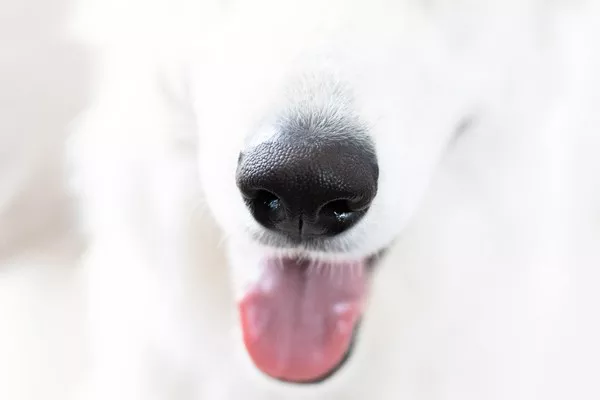The Shar-Pei, with its distinctive wrinkled skin and “hippopotamus” face, is a breed that has gained popularity for its unique appearance and loyal nature. However, potential owners should be aware that this breed comes with its own set of challenges. Understanding these challenges is crucial for anyone considering bringing a Shar-Pei into their home. This article will delve into the various downsides of owning a Shar-Pei, covering health issues, temperament concerns, grooming needs, and other practical considerations.
Health Issues
The Shar-Pei breed is prone to a range of health problems, many of which are directly linked to its unique physical characteristics. These health concerns can lead to significant veterinary costs and require ongoing management.
Skin Problems
The Shar-Pei’s signature wrinkles are prone to skin infections. The folds can trap moisture and bacteria, leading to conditions such as pyoderma. Regular cleaning and careful drying of the skin folds are essential, but even with diligent care, infections can still occur. Hot spots, yeast infections, and fungal infections are also common skin issues in this breed.
Entropion
One of the most common health issues in Shar-Peis is entropion, a condition where the eyelids roll inward, causing the eyelashes to rub against the cornea. This condition can lead to irritation, pain, and even corneal ulcers. Entropion often requires surgical correction to prevent long-term damage to the eyes and maintain the dog‘s quality of life.
Hip Dysplasia
Shar-Peis are also at risk for hip dysplasia, a genetic condition where the hip joint does not develop properly. This can lead to arthritis and significant discomfort. While responsible breeders screen for hip dysplasia, it remains a concern for the breed. Treatment can range from weight management and physical therapy to more invasive surgical options.
Shar-Pei Fever
Unique to this breed, Shar-Pei Fever, also known as Familial Shar-Pei Fever (FSF), is an inherited condition characterized by periodic episodes of fever and inflammation. These episodes can be severe and may lead to a serious complication called amyloidosis, where protein deposits accumulate in organs like the kidneys, leading to organ failure. Managing FSF often requires lifelong medication and vigilant monitoring.
Temperament Concerns
The Shar-Pei’s temperament is another area that requires careful consideration. While they can be loyal and protective, these traits can also present challenges.
Aloofness and Independence
Shar-Peis are known for their independent nature. This aloofness can make them seem standoffish, especially with strangers. They are not typically the type of dog to seek out constant human companionship, which might not suit families looking for a more affectionate and social pet. Early socialization is crucial to ensure they are well-adjusted and less wary of unfamiliar people and environments.
Aggression
Aggression can be a significant issue with Shar-Peis if they are not properly trained and socialized. They have a strong guarding instinct and can be territorial. Without proper leadership and training, this can escalate into aggression towards strangers or other animals. It’s essential for owners to establish themselves as firm and consistent leaders from an early age to prevent behavioral problems.
Training Challenges
Shar-Peis can be stubborn and difficult to train. Their independent nature means they are not always eager to please their owners, which can make obedience training a challenge. Patience, consistency, and positive reinforcement are key to successful training with this breed. Professional training classes can also be beneficial in helping owners handle the specific challenges that come with training a Shar-Pei.
See Also: What Is the Rarest Coat Colour in Shar Pei?
Grooming Needs
Despite their short coat, Shar-Peis have specific grooming needs that potential owners should be aware of. Proper grooming is essential not only for their appearance but also for their overall health.
Coat Maintenance
Shar-Peis have a unique coat that can be rough and bristly. While they do not require extensive grooming like some long-haired breeds, regular brushing is necessary to remove loose hairs and keep their coat healthy. Bathing should be done with a gentle, dog-specific shampoo to avoid skin irritation. It’s also important to thoroughly dry their skin folds to prevent infections.
Nail and Ear Care
Regular nail trimming is important to prevent overgrowth, which can lead to discomfort or injury. Shar-Peis are also prone to ear infections due to their small, tight ear canals. Regular ear cleaning with a vet-recommended solution can help prevent these infections. Owners should be vigilant for signs of ear problems, such as scratching or shaking the head.
Dental Health
Like many breeds, Shar-Peis are susceptible to dental issues. Regular brushing of their teeth and providing dental chews can help maintain their oral health. Periodic professional cleanings by a veterinarian may also be necessary to prevent periodontal disease, which can lead to more serious health problems.
Practical Considerations
In addition to health, temperament, and grooming concerns, there are other practical aspects of owning a Shar-Pei that potential owners should consider.
Size and Living Space
Shar-Peis are medium-sized dogs, typically weighing between 40 and 60 pounds. They require ample space to move around comfortably. While they can adapt to apartment living, they need regular exercise to maintain their physical and mental health. A securely fenced yard is ideal for providing them with space to play and explore.
See Also: Why Do Shar-Peis Have a Bad Reputation?
Exercise Needs
Shar-Peis have moderate exercise needs. Daily walks and playtime are important to keep them physically fit and mentally stimulated. However, they are not as high-energy as some other breeds and may not require extensive exercise. It’s important to strike a balance to avoid obesity, which can exacerbate other health issues.
Cost of Ownership
The cost of owning a Shar-Pei can be higher than some other breeds due to their health care needs. Potential owners should be prepared for regular veterinary visits, medications, and possible surgeries. Quality food, grooming supplies, and training classes also add to the overall cost of ownership. Pet insurance can help mitigate some of these expenses, but it’s important to research and understand the coverage options available.
Conclusion
While the Shar-Pei is a striking and loyal breed, it’s important for potential owners to be fully aware of the challenges they may face. Health issues, temperament concerns, grooming needs, and practical considerations all play a significant role in the life of a Shar-Pei owner.
By understanding these downsides and preparing accordingly, owners can ensure a happy and healthy life for their Shar-Pei. Responsible breeding, proper training, and diligent care are key to managing the unique challenges of this breed. With the right approach, owning a Shar-Pei can be a rewarding experience, but it’s not a commitment to be taken lightly.
Related Topics:

























